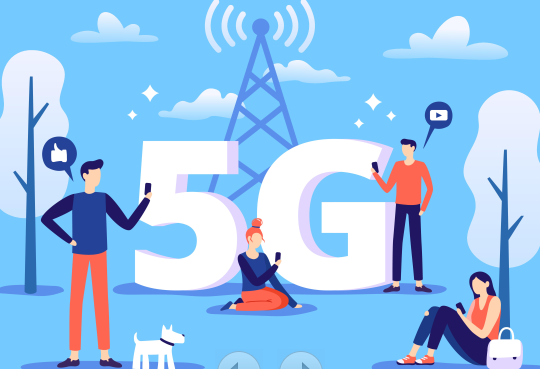Private 5G Networks Will Disrupt All Industries!

Private 5G Networks Will Disrupt All Industries!

5G networks act as enablers, increasing efficiency through automation and the use of technologies that rely on high-quality connectivity such as edge computing and the Internet of Things.
Private 5G networks are a game-changing technological development and one of the main trends reshaping information technology this year. However, questions and concerns still shape perceptions of how organizations are prepared to adopt the solution.
This is the latest technology forecast released by McKinsey, which sees 5G as a key trend reshaping the power of information technology today. "Private 5G networks are a proven technology that many players have already benefited from," the authors of McKinsey said. Furthermore, it added: "Other technologies, such as IoT and automated guided vehicles, are using dedicated 5G-enabled The performance is much better with a high-quality network."
The challenge, McKinsey noted, is the transition from 4G LTE to dedicated 5G, "which may not be cost-effective for all players; it will depend on players' technical aspirations and planned use cases."
It went on to add that 5G networks are "enablers of the revolutionary capabilities of digital transformation, increasing efficiency through automation and enabling technologies that rely on high-quality connectivity such as cloud computing and the Internet of Things".
The McKinsey authors warn that the risks and uncertainties that remain in 5G networks include the relative immaturity of their ecosystem. “Ecosystems of evolving connectivity models such as LPWA and LEO are maturing, but so far few players are offering solutions and services in the market.” It goes on to add that the availability of 5G is another aspect to be wary of , "Some technologies, such as high-band 5G and LEO, may be limited by the large capital investments required to build networks with competitive coverage and performance for mainstream use cases."
Questions raised about the adoption of 5G technology include:
Can 5G completely replace 4G LTE? McKinsey's co-authors said: "Private 5G networks are a proven technology that many players are already benefiting from. Other technologies, such as IoT and automated guided vehicles, are using dedicated 5G support. performance is much better when a high-quality network is available. However, moving from 4G LTE to private 5G may not be cost-effective for all players; it will depend on players’ technical aspirations and planned use cases.”
How will satellite constellations shift the bandwidth balance from terrestrial connections to space-to-Earth connections? Some businesses are already experimenting with internet services; there are signs that consumer devices with low-orbit connectivity are on the way. However, business model pricing will be a challenge to scale the network due to higher capital expenditures and user costs. For all use cases that rely on cost efficiency, energy consumption or overall performance, low-orbit connections are also not a complete replacement for terrestrial networks.
Will 5G outperform LPWA networks for IoT applications? Depending on the availability of legacy LTE networks, players can choose between licensed or unlicensed cellular LPWA standards; this choice may also be critical when dealing with fixed and mobile devices. LPWA standards vary in bandwidth, cost, power consumption, range, and other characteristics; depending on the player's end use case, some standards may be more suitable than others.
McKinsey's co-authors say that as advanced connectivity becomes widely available, "industries will discover innovative use cases". The new capabilities of industrial companies and consumers are expected to have an impact of $2 trillion in global GDP, driven primarily by operational improvements brought about by advanced connectivity across four major industries. The four main industries include:
- Automotive and Assembly: Connectivity enables preventive maintenance, improved navigation, collision prevention, enabling different levels of autonomous driving and ride-sharing services, and personalized infotainment.
- Healthcare systems and services: Low-latency networks and high densities of connected devices and sensors enable real-time monitoring of patients at home, which could be a boon for chronic disease treatment.
- Aerospace and Defense: From critical communications over non-terrestrial networks (NTNs) to connected field assets, connectivity expansion such as 5G networks can dramatically improve capabilities and performance for aerospace and defense users.
- Retail: Network connectivity enables retailers to manage inventory, improve warehouse operations, coordinate supply chains, eliminate checkout activities, and add augmented reality for better product information.
McKinsey's authors also discuss the impact on other industries:
- Telecom: Launched new B2C and B2B service offerings such as improved cellular services for retail customers and dedicated 5G solutions for enterprise customers.
- Aviation, Travel and Logistics: Use LPWA wireless technology to track and trace products and provide data to help customers optimize supply chains.
- Construction and building materials: Building information modeling (BIM), on-site 3D printing, and AR applications all require high-speed, low-latency, extensive connectivity networks.
- Information Technology and Electronics: As connectivity improves and costs fall, demand for smart sensors and IoT1 enabled devices will grow.
- Media and Entertainment: As new devices such as AR/VR devices enter the market, enabling high-speed, value-creating entertainment experiences with limited disruption.
- Metals and Mining: Expanding coverage to enable "smart mining" and digital/automated practices to increase productivity and safety.
- Electricity, Gas and Utilities: Enabling smart utility grids using smart meters, sensors, and other cloud devices.
- Oil and Gas: Leverage advanced connectivity technologies to enable real-time monitoring and optimization of drilling and production activities, as well as digital tools and analytics for offshore operators.